The unspoiled beauty of Mount Rainier National Park offers something for everyone. The fifth national park in the United States, this uber-popular Washington state destination encompasses almost 240,000 acres and an active, 14,411-foot volcano. From refreshing waterfall hikes to relaxing gondola rides, challenging backpacking trips and the best campsites nearby, we’re showcasing bucket list-worthy experiences in Mount Rainier National Park. And don’t let the cold weather conditions deter you; fall in the Pacific Northwest grants outdoor enthusiasts endless opportunities for adventure.
Here are the top 10 experiences at Mount Rainier National Park.
1. Hike to Dramatic Waterfalls
If chasing waterfalls is your thing, don’t miss Mount Rainier National Park’s popular Silver Falls. Accessible from an easy 3-mile round-trip hike, it’s one of the most family-friendly waterfall experiences in the park. The trail starts from Ohanapecosh Campground and winds through old-growth forest adjacent to the powerful Ohanapecosh River. The waterfall is present year-round, but is especially impressive in winter months. Don’t forget to hike to the scenic overlook at the top of the falls!
Learn more about Silver Falls and the Silver Falls Loop Trail here.
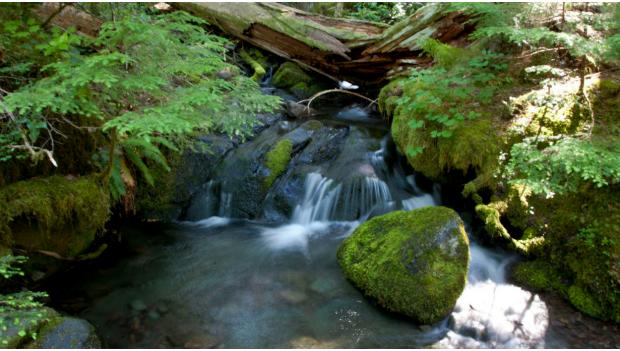
2. Find Yourself at Reflection Lake
One of the most photographed features in Mount Rainier National Park, Reflection Lake has it all — crystal clear alpine waters, wildflowers, fauna and an impressive view of Mount Rainier. Swimming and fishing is prohibited at Reflection Lake, and many of its banks are closed for meadow restoration. Don’t let the regulations deter you though, the jaw-dropping mirror-like reflection is worth the extra effort. You’ll witness true natural beauty, and you might even learn a new truth about yourself.
Reflection Lake is moderately easy to access, through a 2.75-mile hiking trail loop with 850 feet of elevation gain. Learn more about Reflection Lake here.
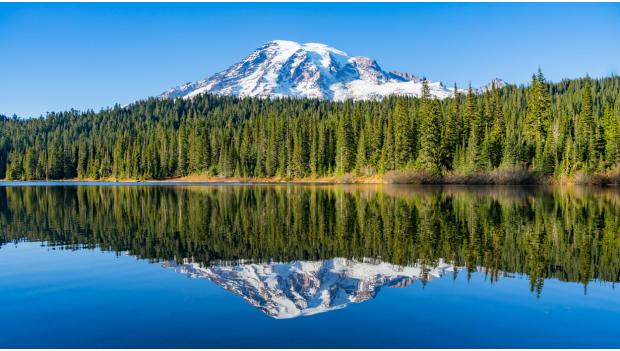
3. Reach the Summit
There’s a reason mountaineers from all corners of the globe are drawn to Mount Rainier. The natural attraction is heavily glaciated, stands on a 14,410-foot tall active volcano and has varying weather and snow conditions. This mountain isn’t for hiking novices (50 percent of attempts fail); experience and good physical conditioning is a must — even if you hire a professional guide.
Climbing permits and camping reservations are required. Contact the Mount Rainier Climbing Rangers at (360) 569-6641 for more information regarding weather, avalanche and route conditions.
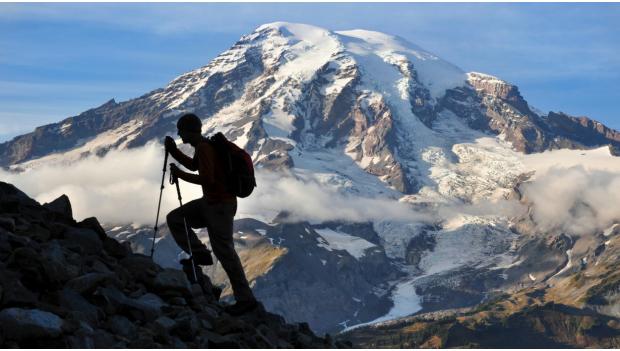
4. Stop and Smell the Wildflowers
The Mount Rainier region is known for its impressive wildflowers blooms. While viewing can be difficult to predict and varies depending on weather conditions, peak wildflower season is generally mid-July and early August. You don’t have to hike deep in the backcountry to see awe-inspiring blooms. Paradise and Sunrise visitor areas have wildflower meadows with a network of easy trails.
Cougar Rock Campground is located near Paradise, and generally has open availability in summer months. Learn more about Mount Rainier’s numerous species of wildflowers here.
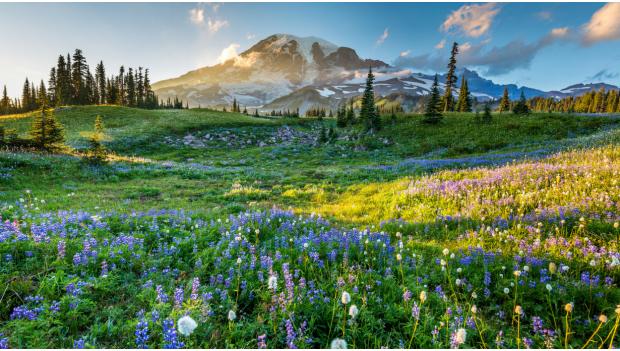
5. Ride Around Mount Rainier in One Day
This one-day event is not for the casual cyclist. Started by the Redmond Cycling Club, RAMROD (or Ride Around Mount Rainier in One Day) features a 154-mile course with 10,000 cumulative feet of climbing. The event takes place in summer, and 750+ amateur cyclists show up to test their skills.
If this sounds like too many miles for you, Mount Rainier National Park features other world-class cycling routes on steep, narrow and scenic roads with much less of a time commitment. Be advised, September and October are the best times to explore by bike.
Learn about RAMROD, here. Learn about other cycling routes here.
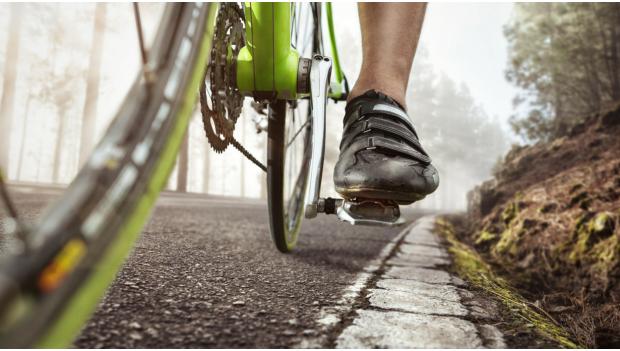
6. Take a Seat and Enjoy the View
Sometimes hiking up the side of a mountain just doesn’t sound appealing, no matter how rewarding the view may be. If you can relate to that sentiment, this experience is for you. The Mount Rainier Gondola offers family-friendly gondola rides to the summit of Crystal Mountain from mid-June through mid-September. Not only do you gain 2,000 feet on an exciting ride, but you’ll enjoy impressive views of both Mount Rainier and the Cascade Range.
When you reach the top, relax with a meal at Summit House, the highest elevation restaurant in Washington. Hiking trails also start from the summit. Learn more about the gondola here.
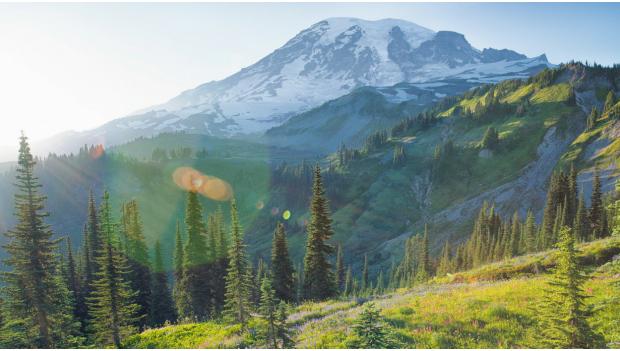
7. Test Yourself on The Wonderland Trail
If you want the ultimate Mount Rainier National Park experience, look no further than The Wonderland Trail. At 93 miles long with over 22,000 feet of elevation gain, this ball buster of a backpacking trail encircles Mount Rainier and includes both lowland forests and high alpine areas. Beware hiking novices; you must have serious mountain experience and strong physical conditioning to take on the entire trail (although hiking small portions is completely doable).
Over 20 campgrounds are available along the route, giving you options when determining how far you’d like to hike on any given day. Planning ahead is key and caching food and fuel is a must. Wilderness permits are required for all overnight camping, and the park accepts reservation requests starting on March 15th each year. Learn more and plan your own Wonderland Trail adventure here.
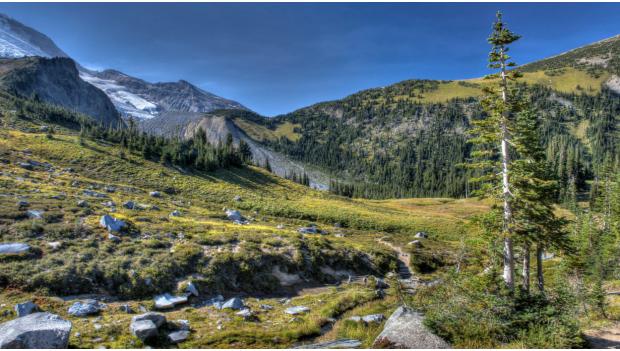
8. Fish in Pristine Mountain Lakes and Streams
While Mountain Rainier isn’t necessarily known for their impressive fish counts, we can’t think of a better way to spend an afternoon than testing our luck surrounded by picturesque scenery. The lakes are usually ice-free starting in July, and the rivers and streams are generally open in early June.
There is no catch limit in park lakes and a license is not required for park waters. There are species listed under the Endangered Species Act present in Mount Rainier National Park, so barbless hooks are advised. Learn more about Mount Rainier’s fishing rules and regulations here.
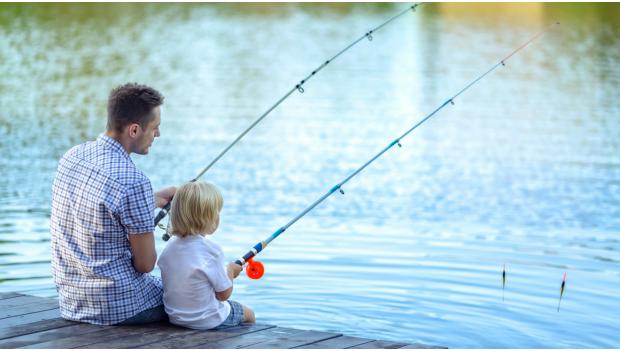
9. Ride the Railroad Through the Foothills
While this rail ride doesn’t travel through Mount Rainier National Park, the unique view of the mountain by steam train won’t disappoint. Passengers begin the journey at the depot in Elbe and depart at the logging museum in Mineral. Crossing the glacial waters of the Upper Nisqually River is a fan favorite, and Mount Rainier can be seen on a clear day despite being at only 1,470 feet.
Learn more about the Mount Rainier Railroad and Logging Museum here.
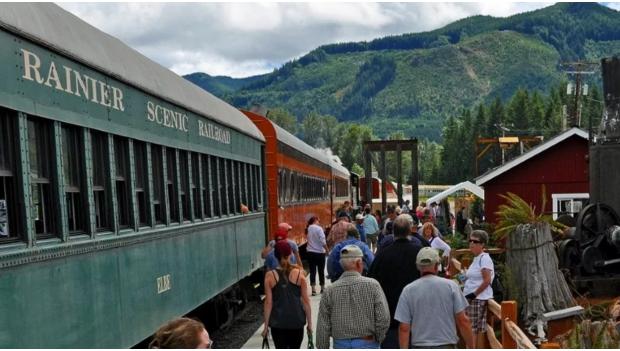
Photo courtesy of Mount Rainier Railroad and Logging Museum.
10. Attend a Free Ranger Program
Do you ever find yourself hiking and wishing you knew more about your surroundings? The best way to learn about Mount Rainier National Park is to meet with and listen to the park’s knowledgeable and passionate staff. From an astronomy program to a junior ranger program, these free ranger-led experiences are engaging, fun and informative with interesting facts for the whole family. A variety of programs are offered from July through September, with limited special programs in winter.
Learn more about Mount Rainier ranger programs here.
Ready for an adventure? Find the best campsite reservations in America.